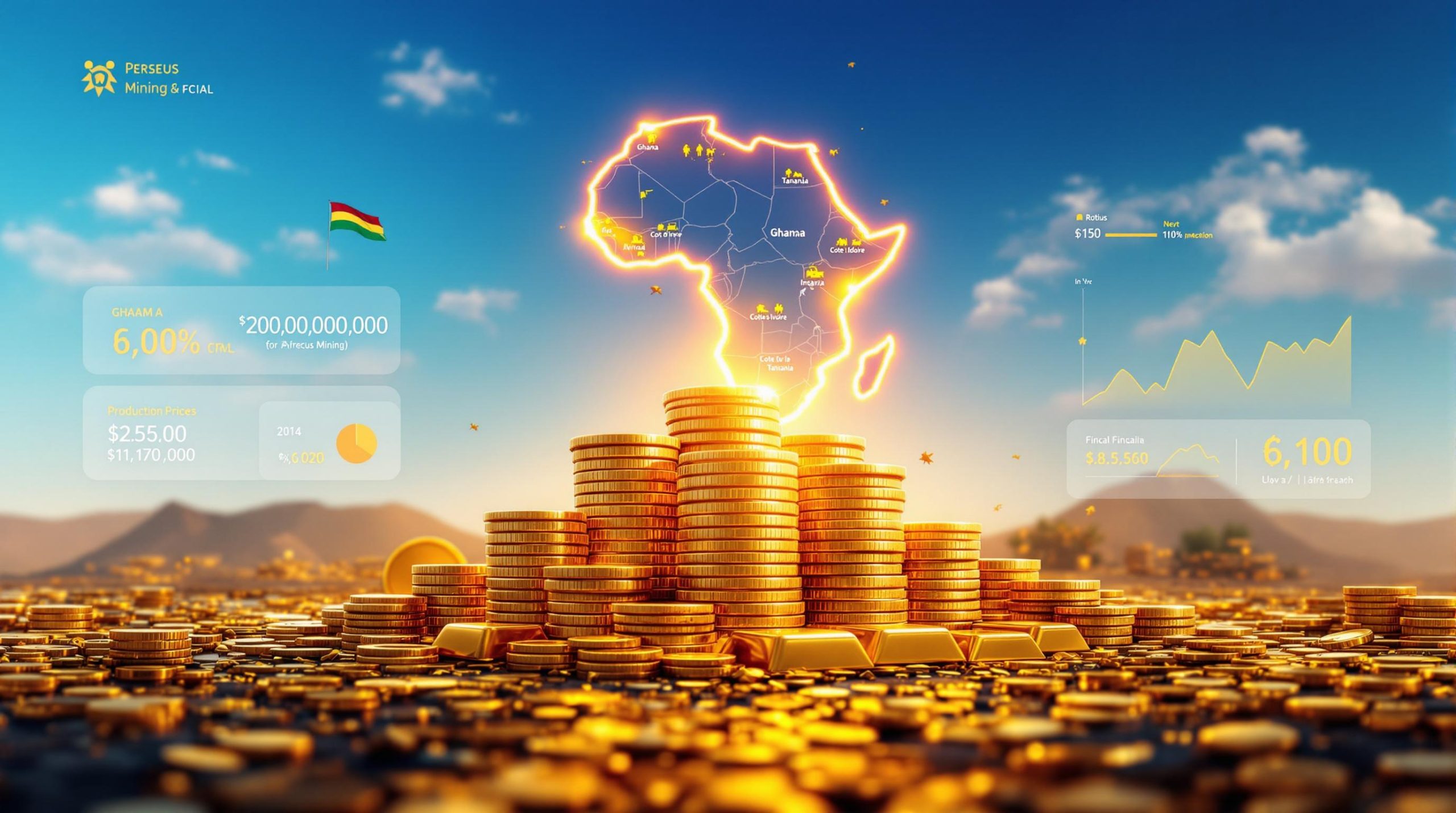Understanding the Barrick-Mali Government Dispute: Challenges and Implications
The relationship between mining giant Barrick Gold and Mali's government has deteriorated into one of the most significant mining disputes in West Africa, with far-reaching implications for both parties and the broader mining investment landscape. What began as negotiations over a new mining code has escalated into a crisis involving mine seizure, imprisoned executives, and international arbitration.
What is the Dispute Between Barrick Gold and Mali's Government?
Background of the Barrick-Mali Relationship
Barrick Gold's presence in Mali dates back to the operations established by Randgold Resources, which merged with Barrick in 2019. This merger brought the Loulo-Gounkoto complex under Barrick's portfolio, representing one of the company's most significant gold-producing assets in Africa.
The Loulo-Gounkoto complex stands as a cornerstone of Mali's mining industry, producing approximately 700,000 ounces of gold annually on a 100% basis. This production makes it not only a crucial asset for Barrick but also a vital source of revenue for the Malian economy.
Over the years, the relationship had been generally productive, with the operation contributing substantially to Mali's export revenues and providing employment opportunities for local communities. However, political changes in the country would soon test this partnership.
Core Issues in the Current Dispute
The current dispute between Barrick and Mali government traces back more than 12 months, following Mali's military government's decision to enact a new mining code. This revised framework introduced significant changes to the ownership model of mining operations and substantially increased taxation demands on mining companies.
According to Barrick CEO Mark Bristow, the company has made additional payments to the government as a show of good faith. Despite these efforts, a final agreement remains elusive. Particularly frustrating for Barrick has been the near-resolution of the dispute on three separate occasions, with each potential settlement ultimately rejected by the Malian government.
"The dispute with Mali reaches back more than 12 months after the junta enacted a new mining code in terms of which it insisted on a new ownership model, and increased taxes," reported MiningMx in August 2025.
At the heart of the conflict lies a fundamental disagreement over resource sovereignty and fair distribution of mining revenues. While Mali's government seeks greater control and financial benefits from its natural resources, Barrick argues that changing established agreements undermines investor confidence and contractual stability.
How Has Mali's Government Escalated the Situation?
Government Takeover of Mine Operations
In a dramatic escalation, Mali's military government placed the Loulo-Gounkoto complex under administrative control, effectively seizing operational management of one of the country's largest gold mines. This unprecedented action has created significant operational challenges and raised serious concerns about the mine's continued efficient operation.
The government's intervention has included attempts to access Barrick's operational systems, including its SAP platforms—the digital backbone of modern mining operations that manage everything from inventory to financial transactions.
Bristow's response to this intrusion was decisive: "There's no way that we can allow strangers to get access to our SAP platforms and we have since terminated access." This defensive measure was necessary to protect the integrity of Barrick's global operational systems, but it further complicates the management of the mine under government control.
The practical implications of government management raise serious questions about the technical expertise available to maintain optimal production levels. Mining operations of this scale require specialized knowledge in geology, engineering, metallurgy, and financial management—expertise that may not be readily available within government ranks.
Legal Actions Against Barrick Personnel
In a further troubling development, Mali's authorities have imprisoned four Malian executives employed by Barrick. These individuals represent critical technical talent for the mine's operations.
"They are top-flight engineers and geologists and accountants," Bristow noted, highlighting the caliber of the detained professionals. Their imprisonment not only represents a humanitarian concern but also removes key technical expertise from the operation's management structure.
Barrick continues to support these executives and maintains communication with them where possible. However, their detention creates a significant void in the local management team and sends a chilling message to other mining professionals working in the country.
The imprisonment of these executives appears to be part of a pressure strategy by Mali's government, potentially designed to force concessions from Barrick in ongoing negotiations. This approach has been condemned by industry consolidation trends observers as counterproductive and damaging to Mali's reputation as an investment destination.
What Makes This Dispute Particularly Challenging for Barrick?
CEO Perspective on the Crisis
Mark Bristow, who has navigated numerous complex situations throughout his distinguished career in African mining, has characterized the Mali situation as "the most stressful thing I've ever managed." This assessment is particularly telling coming from an executive with more than three decades of experience in challenging mining jurisdictions.
Bristow's career in African mining began with Randgold & Exploration in 1994, long before the 2019 merger that brought Randgold Resources together with Barrick Mining Corp. Throughout this period, he has successfully navigated political transitions, civil unrest, and regulatory changes across multiple African countries.
For such an experienced mining executive to identify the Mali dispute as his most significant challenge speaks volumes about its complexity and potential consequences. The timing is also notable, as Bristow has indicated he intends to remain at Barrick's helm until 2028, when he plans to retire.
Operational and Financial Implications
The dispute creates substantial operational uncertainty for one of Barrick's key assets. The Loulo-Gounkoto complex is a significant contributor to Barrick's overall production profile, and disruptions could materially impact the company's financial performance.
From a technical perspective, modern mining operations require continuous attention to geological modeling, resource planning, equipment maintenance, and processing optimization. Any disruption to these technical functions could lead to inefficiencies, increased costs, and potentially even safety concerns.
Investors and shareholders are closely monitoring the situation, with concerns about both short-term financial impacts and longer-term implications for Barrick's operations in Mali and potentially other jurisdictions. The hostile mining strategies employed by Mali have created uncertainty that may affect Barrick's market valuation and ability to raise capital for future projects.
The financial stakes are substantial for both parties. For Barrick, Loulo-Gounkoto represents a significant revenue-generating asset with substantial remaining reserves. For Mali, the mine is a crucial source of foreign exchange, tax revenue, and employment.
What Resolution Mechanisms Are Being Pursued?
International Arbitration Strategy
Facing limited options for resolution, Barrick has turned to international arbitration as "the only lever" available to address the dispute. This legal pathway provides a structured process for resolving the conflict according to established international investment protection principles.
"It's the only lever we have," Bristow stated regarding the arbitration process, though he also expressed optimism that it "will be speedier than many imagine, if that's the route events take."
International arbitration in mining disputes typically involves a panel of independent arbitrators evaluating the actions of both parties against the standards established in investment treaties and contracts. The process provides a forum for both sides to present evidence and arguments before a binding decision is rendered.
While arbitration can be lengthy and costly, it offers several advantages in this context. It provides a neutral forum outside of Mali's domestic legal system, applies internationally recognized legal principles, and can result in enforceable awards. For Barrick, this represents a crucial mechanism to protect its investments against what it views as government overreach.
Ongoing Negotiation Attempts
Despite pursuing arbitration, Barrick remains open to reaching a negotiated settlement with Mali's government. This dual-track approach reflects a pragmatic recognition that a mutually agreed solution would likely be preferable to both parties than a protracted legal battle.
The history of three near-settlements suggests that common ground exists, even if final agreement has remained elusive. Each near-settlement likely involved compromises on ownership structures, taxation rates, and other economic terms—indicating potential parameters for an eventual resolution.
The challenge in reaching mutually acceptable terms appears to lie in the political dynamics within Mali's military government, where factional interests and resource nationalism sentiments may complicate decision-making. External diplomatic efforts could potentially help bridge these gaps, though the effectiveness of international pressure on Mali's current leadership remains uncertain.
How Does Mali's Political Environment Affect Mining Investments?
Mali's Governance Changes Since 2021
Mali's current political landscape has been shaped by the military junta that came to power through what has been described as a "coup-within-a-coup" in 2021. This political transition marked a significant shift in governance approach, including attitudes toward foreign investment in the mining sector.
The military government has demonstrated a more assertive stance on resource nationalism, seeking to increase state participation and benefits from mining operations. This shift aligns with broader trends across parts of Africa, where governments are increasingly seeking to renegotiate terms with foreign mining companies.
Mali's approach contrasts with some neighboring countries that have maintained more stable and predictable mining policies to attract continued investment. This divergence creates a complex regional landscape for mining companies operating across multiple West African jurisdictions.
The junta's governance style has been characterized by centralized decision-making and limited transparency, creating challenges for companies attempting to navigate regulatory processes and resolve disputes through conventional channels.
Regional Context for Mining Disputes
Mali's dispute with Barrick is not occurring in isolation but reflects broader tensions between mining companies and governments across West Africa. Other international mining companies operating in Mali have faced their own challenges adapting to the new mining code and regulatory environment.
Companies like B2Gold have encountered delays in securing approvals for underground mining operations at their Fekola mine, while Endeavour Mining has been engaged in its own discussions regarding the implementation of Mali's revised mining code.
These parallel cases suggest systemic challenges in Mali's current approach to mining investment rather than issues specific to Barrick. The pattern raises concerns about Mali's attractiveness as a destination for mining capital compared to other jurisdictions in the region that offer more stable investment conditions.
Mining companies across West Africa are closely watching the gold corporate dispute as a potential indicator of how similar conflicts might unfold in their own operations. The resolution mechanisms and eventual outcomes will likely influence corporate strategies for political risk management throughout the region.
What Are the Broader Implications for Gold Mining in West Africa?
Investment Climate Considerations
The dispute between Barrick and Mali's government has significant implications for the investment climate across West Africa's gold mining sector. Mining companies evaluating new projects or expansions must now factor in elevated political risk assessments for Mali specifically and potentially the broader region.
Risk premiums for projects in politically volatile jurisdictions typically translate into higher required returns on investment, potentially making marginal projects uneconomic and redirecting capital to more stable regions. This could result in delayed development of Mali's remaining gold resources.
Gold production forecasts for West Africa may require adjustment if the dispute leads to prolonged disruption at Loulo-Gounkoto or discourages investment in new projects. Such production shortfalls could have modest implications for global gold investment trends, though the market impact would likely be limited given the relatively small proportion of global production affected.
Mining companies with existing operations in Mali face difficult decisions about future capital allocation. While geological potential remains attractive, increased political risk may prompt greater caution in committing to major expansions or new developments within the country.
Industry Adaptation Strategies
Mining companies operating in politically volatile regions are developing increasingly sophisticated approaches to managing jurisdictional risk. These strategies include more robust legal structures for investments, phased capital deployment, and diversified country portfolios to limit exposure to any single jurisdiction.
"While we support them and we talk to them," Bristow noted regarding the imprisoned executives, highlighting the human dimension of corporate responsibility during political crises.
Community relationships have become an increasingly important component of risk mitigation strategies. Companies that establish strong local support through employment, development initiatives, and transparent engagement often find themselves better positioned to navigate political transitions.
Contract structures are evolving to include more explicit stabilization clauses, international arbitration provisions, and force majeure considerations. These legal protections aim to create more resilient investment frameworks capable of withstanding political changes.
Many major gold producers are pursuing geographical diversification strategies, balancing high-potential but higher-risk jurisdictions with more stable operating environments. This portfolio approach helps insulate companies from the impacts of disputes like the one between Barrick and Mali.
FAQ: Key Questions About the Barrick-Mali Dispute
What is the production capacity of the Loulo-Gounkoto complex?
The Loulo-Gounkoto complex produces approximately 700,000 ounces of gold annually on a 100% basis, making it one of West Africa's largest gold mining operations. This production represents a significant portion of Barrick's African gold output and constitutes a material asset within the company's global portfolio.
The mine complex has historically demonstrated strong operational performance, with competitive production costs and substantial remaining reserves. These characteristics make it particularly valuable to both Barrick and Mali's economy, raising the stakes in the ongoing dispute.
Loulo-Gounkoto's economic significance extends beyond direct gold production to include employment, local procurement, community development initiatives, and tax contributions. These broader economic impacts underline the importance of finding a sustainable resolution to the current conflict.
How might this dispute affect gold prices?
While the Loulo-Gounkoto complex is significant within Barrick's portfolio and Mali's economy, its production represents only a small fraction of global gold output, which exceeds 100 million ounces annually. As such, even a complete disruption would be unlikely to materially impact global gold prices.
However, if the dispute were to signal a broader trend of resource nationalism and disruption across multiple gold-producing regions, investor sentiment could be affected. Gold markets are sensitive to perceptions of supply risk, even when actual production impacts are limited.
The primary market impact may be on Barrick's own share price and valuation, as investors assess the potential financial implications of prolonged disruption or unfavorable resolution of the dispute. This company-specific impact would not necessarily extend to broader gold price movements.
Historical precedents suggest that localized mining disputes, even significant ones, rarely drive sustained movements in gold prices unless they coincide with other macroeconomic factors or affect multiple major producers simultaneously.
What options does Barrick have beyond arbitration?
While international arbitration represents Barrick's primary formal recourse, the company maintains several complementary strategies. Continued diplomatic engagement, potentially involving third-party mediators or international organizations, could help facilitate renewed negotiations.
Barrick may explore restructuring proposals that address Mali's core concerns while preserving the economic viability of the operation. Such proposals might include revised ownership arrangements, enhanced local content requirements, or adjusted fiscal terms that provide greater benefits to Mali while maintaining essential investor protections.
Strategic corporate responses could include operational adjustments to minimize financial exposure while maintaining the asset's long-term value. This might involve optimizing production plans, managing capital expenditure, or adjusting workforce deployment without compromising safety or environmental standards.
The company could also leverage its long history in Mali and relationships with local communities to build broader support for a negotiated resolution. This stakeholder engagement approach recognizes that sustainable mining operations require not just government approval but also social license to operate.
How does this dispute compare to other mining conflicts in Africa?
The Barrick-Mali dispute shares common elements with other recent mining conflicts in Africa, including Tanzania's confrontation with Acacia Mining (later resolved following Barrick's intervention) and various disputes in the Democratic Republic of Congo. These parallels include assertions of resource sovereignty, demands for increased state benefits, and the use of administrative measures to pressure mining companies.
However, Mali's approach of imprisoning company executives and directly taking over mine management represents an unusually aggressive escalation compared to most mining disputes, which typically remain in the realm of legal and regulatory contestation.
Previous arbitration cases involving African governments have shown mixed outcomes, with some resulting in negotiated settlements before final rulings and others proceeding to binding decisions. The timeframes have varied widely, from relatively quick resolutions to prolonged multi-year processes.
Mining companies have learned from these experiences to build more robust investment protection mechanisms, stronger community relationships, and more flexible operational approaches that can adapt to changing political environments.
Future Outlook for Mining Investment in Mali
Potential Resolution Scenarios
A negotiated settlement remains the most favorable outcome for both parties, potentially involving a restructured ownership arrangement that increases Mali's participation while preserving Barrick's operational control and economic returns. Such an agreement would likely include revised fiscal terms, commitments to local development, and strengthened stability provisions.
The timeframe for resolution will depend significantly on whether progress can be made through direct negotiations alongside the arbitration process. Arbitration proceedings themselves typically take 12-24 months, though complex cases can extend longer.
Key indicators that might signal progress toward resolution would include the release of detained executives, restoration of Barrick's operational control, and public statements from both parties indicating renewed dialogue. International diplomatic involvement could also suggest movement toward negotiated settlement.
Mali's willingness to compromise may be influenced by economic realities, including the technical challenges of operating the mine without Barrick's expertise, the potential impacts on future mining investment, and possible pressure from regional organizations concerned about economic stability.
Long-term Investment Implications
The dispute will likely reshape mining investment strategies in West Africa, with companies conducting more rigorous political risk assessments and potentially requiring higher expected returns to justify capital deployment in jurisdictions perceived as higher risk.
Future mining contracts in the region may feature more elaborate stability provisions, international arbitration clauses, and phased investment structures that limit initial exposure until political environments prove stable. Companies may also seek additional political risk insurance coverage, though such protection typically comes with significant cost implications.
The fundamental geological attractiveness of Mali's gold deposits ensures continued interest from mining companies, but investment decisions will increasingly balance this mineral potential against elevated sovereign risk assessments. This recalibration could lead to slower development of resources and more cautious capital deployment strategies.
For Mali and similar jurisdictions,
Want to Catch the Next Major Mineral Discovery?
Discovery Alert's proprietary Discovery IQ model delivers instant notifications on significant ASX mineral discoveries, giving investors a crucial edge in identifying actionable opportunities before the broader market. Visit our discoveries page to explore how historic mineral discoveries have generated substantial returns and start your 30-day free trial today.




